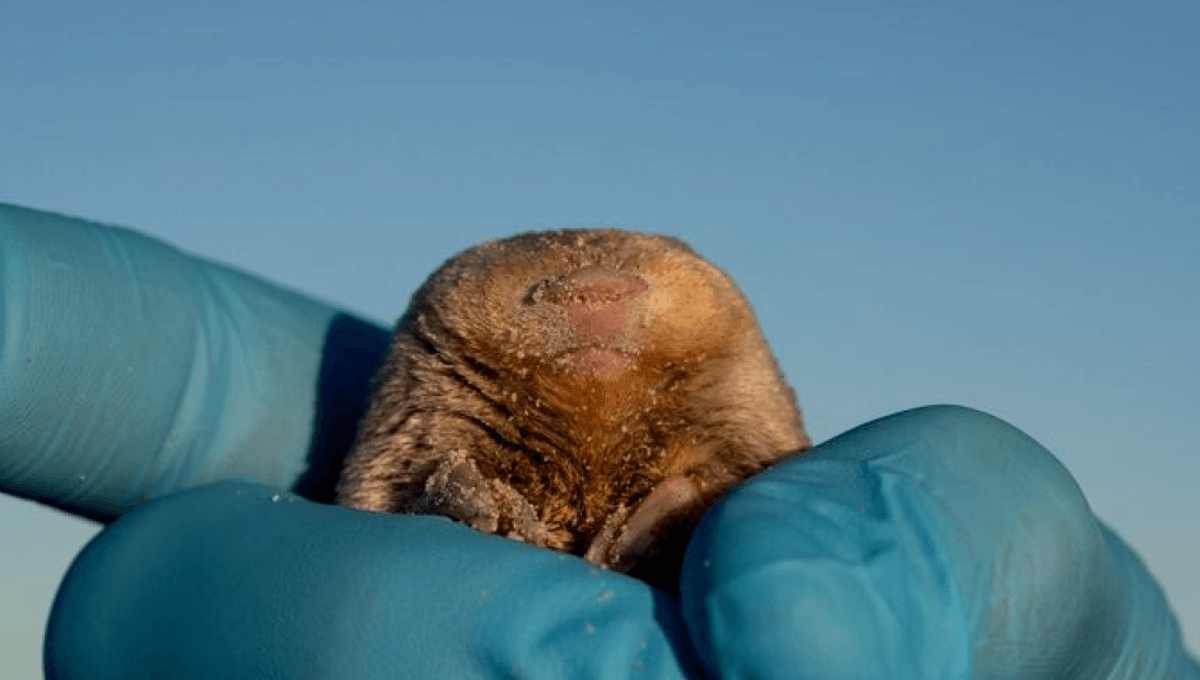
Scientists are rejoicing as a species that was believed to be lost for the last 80 years has been rediscovered alive and well. The De Winton’s golden mole was last seen in 1936, but now becomes the 11th of Re:wild’s “most wanted lost species list” to be rediscovered since the Search For Lost Species launched in 2017.
Looking just a little like a nugget came to life, the De Winton’s golden mole, Cryptochloris wintoni, is partial to sandy shores and arid shrublands. Finding it was never going to be easy, being a golden mole that “swims” in golden sands, and it was certainly no walk in the park for the researchers behind its rediscovery.
They were tasked with surveying up to 18 kilometers (11.2 miles) of dune habitat a day in order to detect the mole using environmental DNA (eDNA), which is the DNA that animals shed as they move through the environment. It comes in many forms, but for a small mammal, you might expect skin cells, hair, and bodily fluids.
It might sound like finding a tiny molecule in a massive stack of slightly larger molecules, but in some ways, it was easier than trying to sneak up on a De Winton’s mole as they have superpowers when it comes to hearing and detecting surface disturbances. This means they’d be long gone before a scientist managed to excavate them from the sand, but the eDNA technique is by no means easy.
“Extracting DNA from soil is not without its challenges, but we have been honing our skills and refining our techniques – even before this project – and we were fairly confident that if De Winton’s golden mole was in the environment, we would be able to detect it by finding and sequencing its DNA,” said Samantha Mynhardt, conservation geneticist with the Endangered Wildlife Trust (EWT) and Stellenbosch University, in a statement seen by IFLScience.
Fortunately, the hard work paid off as 100 soil samples later, the team determined that there were several species of golden mole living in dunes along the northwest coast of South Africa. There were two more common species – Cape golden mole and Grant’s golden mole – as well as Van Zyl’s golden mole, which is endangered and rare, but the fourth and most surprising discovery was our “long lost” De Winton’s golden mole.
“Though many people doubted that De Winton’s golden mole was still out there, I had good faith that the species had not yet gone extinct,” said Cobus Theron, senior conservation manager for EWT and a member of the search team.
“I was convinced it would just take the right detection method, the proper timing, and a team passionate about finding it. Now not only have we solved the riddle, but we have tapped into this eDNA frontier where there is a huge amount of opportunity not only for moles, but for other lost or imperiled species.”
The study is published in Biodiversity And Conservation.
Source Link: Golden Mole "Lost" Since 1936 Found Swimming Through Sand Dunes In South Africa